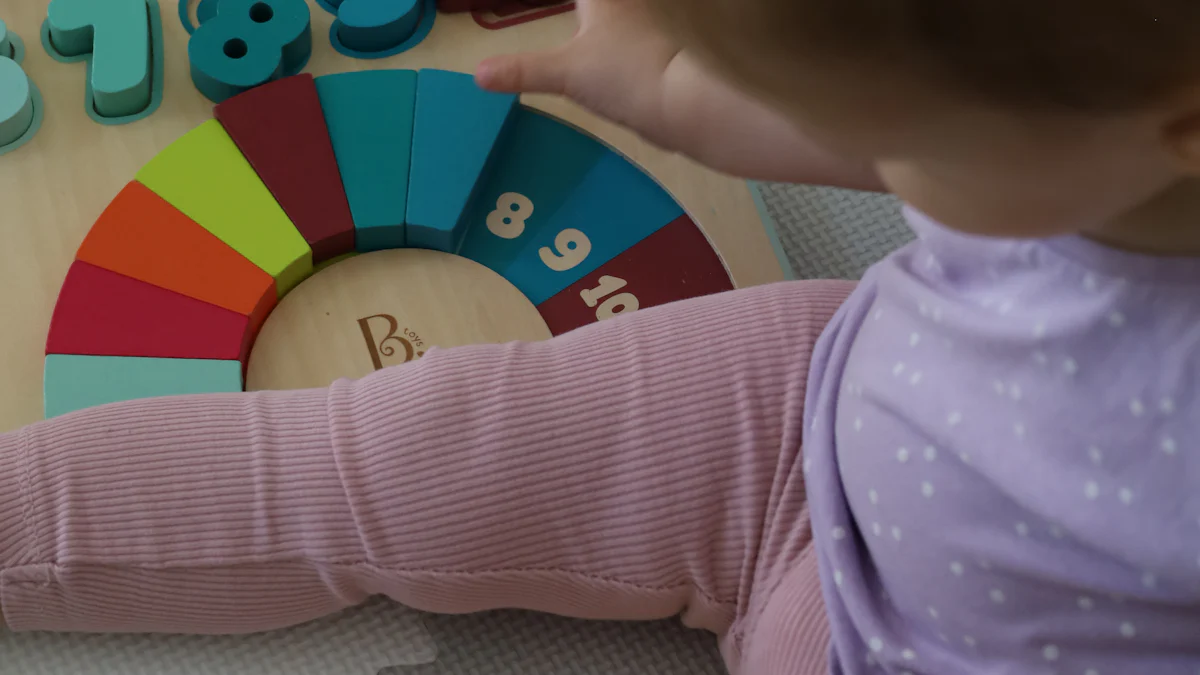Nurturing Your Child’s Curiosity: Encouraging Questions and Exploration

Children possess a natural curiosity that drives exploration and discovery. Encouraging curiosity offers numerous benefits. Kids develop self-directed learning skills, which are crucial for lifelong growth. Curiosity fosters intrinsic motivation, allowing kids to learn from mistakes and embrace the chaos of authentic learning. Nurturing Your Child’s Curiosity involves creating an environment where questions and exploration thrive. This approach helps kids question, search, fail, and try again, leading to genuine understanding. Dive into strategies that support this journey, ensuring kids grow into confident and inquisitive learners.
Understanding the Importance of Curiosity
The Role of Curiosity in Child Development
Cognitive Benefits
Curiosity boosts brain power. Kids who ask questions learn faster. Exploration helps kids connect ideas. New experiences build strong memory skills. Curiosity encourages critical thinking. Children find creative solutions to problems. Self-directed learning thrives on curiosity. Kids pursue their strengths with passion.
Emotional and Social Growth
Curiosity nurtures emotional growth. Kids feel confident when exploring. New challenges build resilience. Children learn to embrace mistakes. Curiosity fosters empathy. Kids understand different perspectives. Social interactions improve with curiosity. Friendships grow through shared discoveries.
Long-term Advantages of a Curious Mind
Lifelong Learning
Curiosity fuels lifelong learning. Kids stay motivated to learn new things. Schools value curious students. Educators inspire curiosity in classrooms. Learning becomes meaningful with self-direction. Kids explore ideas in unique ways. Curiosity keeps minds active and engaged.
Problem-solving Skills
Curiosity enhances problem-solving skills. Kids tackle challenges with enthusiasm. Creative thinking leads to innovative solutions. Exploration encourages adaptability. Children learn to navigate complex situations. Curiosity builds confidence in decision-making. Problem-solving becomes a natural part of life.
Nurturing Your Child’s Curiosity: Creating a Curiosity-friendly Environment

Creating a curiosity-friendly environment plays a crucial role in nurturing your child’s curiosity. A space that invites exploration and discovery encourages children to ask questions and seek answers. Let's dive into how you can create such an environment.
Safe and Stimulating Spaces
Encouraging Exploration
Children thrive in environments that invite them to explore. You can set up areas where kids feel safe to wander and investigate. Consider using soft mats or rugs for comfort. Arrange furniture to create little nooks and pathways. These setups encourage kids to move around and discover new things. Kids love spaces where they can touch, see, and interact with their surroundings.
Providing Diverse Materials
Diverse materials spark curiosity. Offer a variety of textures, colors, and shapes. Think about including natural items like rocks, leaves, and shells. Art supplies like crayons, paints, and clay also inspire creativity. Books with vivid pictures and simple words can captivate young minds. When kids have access to diverse materials, they find endless opportunities for exploration.
Encouraging Open-ended Play
Benefits of Unstructured Play
Unstructured play is a powerful tool for nurturing your child’s curiosity. Kids use their imagination and creativity when they play without strict rules. They invent games and stories, which helps develop problem-solving skills. Through play, children learn to make decisions and take risks. This type of play supports self-directed learning, allowing kids to pursue their strengths.
Tools and Toys that Foster Creativity
Select tools and toys that encourage creative thinking. Building blocks, puzzles, and dress-up clothes are great choices. These items let kids experiment and explore different scenarios. Musical instruments and art supplies also offer endless possibilities. Children feel welcome and accepted on their unique journey when they have the freedom to choose how they play.
Nurturing your child’s curiosity involves creating spaces and providing resources that inspire exploration. By offering safe environments and diverse materials, you encourage kids to ask questions and seek answers. Embracing unstructured play and creative tools further supports their journey. These strategies help children grow into confident and inquisitive learners.
Modeling Curiosity and Interest
Demonstrating Enthusiasm for Learning
Sharing Your Interests
Kids love when you share your passions. Show excitement about your hobbies. Talk about the things you enjoy. Kids will see your enthusiasm. This sparks their interest. Share stories about your experiences. Kids learn from your adventures. You become a role model for curiosity.
Exploring New Topics Together
Dive into new topics with your child. Pick something unfamiliar. Research it together. Use books, videos, or online resources. Ask questions along the way. Encourage your child to ask questions too. Discovering new things becomes a shared adventure. This builds a strong bond. Kids feel supported in their quest for knowledge.
Asking Questions and Seeking Answers
Encouraging Critical Thinking
Ask open-ended questions. Encourage your child to think deeply. Questions like "Why do you think that happened?" or "What would you do differently?" stimulate critical thinking. Kids learn to analyze situations. They start forming their own opinions. This process strengthens their problem-solving skills.
Engaging in Joint Problem-solving
Solve problems together. Present challenges as puzzles to figure out. Work as a team to find solutions. Celebrate successes and learn from failures. Remember, learning is sloppy. Kids need space to question and search. Allow them to fail and try again. This approach builds resilience and confidence. Kids develop a love for learning through shared problem-solving experiences.
Following the Child’s Lead

Observing and Responding to Interests
Kids show curiosity in many ways. You might notice them jumping from topic to topic. This behavior is a sign of their interests. Observing these moments helps you understand what excites them. Responding to these interests can make learning more meaningful.
Tailoring Activities to Their Curiosity
Create activities that match their interests. If a child loves dinosaurs, plan a dinosaur-themed day. Use books, toys, and even snacks related to dinosaurs. This approach keeps kids engaged. Kids learn best when activities align with their passions.
Supporting Their Unique Learning Path
Every child learns differently. Some kids prefer hands-on activities. Others enjoy reading or watching videos. Support their unique learning path by offering various resources. Encourage exploration in ways that suit their style. This support builds confidence in their abilities.
Encouraging Self-directed Learning
Self-directed learning empowers kids. Kids take charge of their education. This method fosters independence. Kids become active participants in their learning journey.
Fostering Independence
Provide opportunities for kids to make choices. Let them decide which book to read or what project to start. This freedom encourages independence. Kids learn to trust their instincts. Decision-making becomes a natural part of their routine.
Building Confidence in Exploration
Celebrate successes and failures. Both are essential parts of learning. Acknowledge their efforts, not just the results. Kids gain confidence when they feel supported. Exploration becomes an exciting adventure. Kids develop a love for learning through these experiences.
Answering Questions Appropriately
Providing Age-appropriate Explanations
Simplifying Complex Concepts
Kids often ask tricky questions. You can break down complex ideas into simple parts. Use everyday examples to explain tough topics. Visual aids like drawings or models help too. Kids grasp ideas faster with clear explanations.
Encouraging Further Inquiry
Curiosity grows when kids explore more. Invite them to ask follow-up questions. Offer resources like books or videos to dive deeper. Encourage kids to share their thoughts and ideas. This approach keeps curiosity alive.
Balancing Guidance and Discovery
Knowing When to Step Back
Kids need space to learn on their own. Observe when they seem ready to explore independently. Step back and let them take the lead. Confidence builds when kids solve problems themselves.
Allowing for Mistakes and Learning
Mistakes are part of learning. Celebrate efforts, not just successes. Discuss what went wrong and how to improve. Encourage kids to try again. Resilience grows through trial and error. Kids learn valuable lessons from every experience.
Nurturing curiosity in children involves several key strategies. Create environments that invite exploration and provide diverse materials. Encourage open-ended play and model enthusiasm for learning. Follow your child's lead and support their unique learning path. Answer questions with age-appropriate explanations. Implementing these strategies fosters self-directed learning and confidence. Children learn quickly and effectively when they explore ideas freely. Encourage questions and embrace mistakes. This approach leads to genuine understanding and growth. Integrate these practices into daily interactions to support your child's development.
See Also
Inspiring Wonder: The Importance of Inquiring for Child Growth
Parental Influence on Nurturing Kids' Inquisitiveness and Discovery
Easy Techniques to Cultivate a Positive Outlook in Your Child
Guiding a Tender Child: Effective Methods for Gentle Correction

